| Your browser is not supported. | ||
|
Please browse our site using any of the following options:
| ||
10 x Stand Up Paddle Boarding Tips For Every Beginner
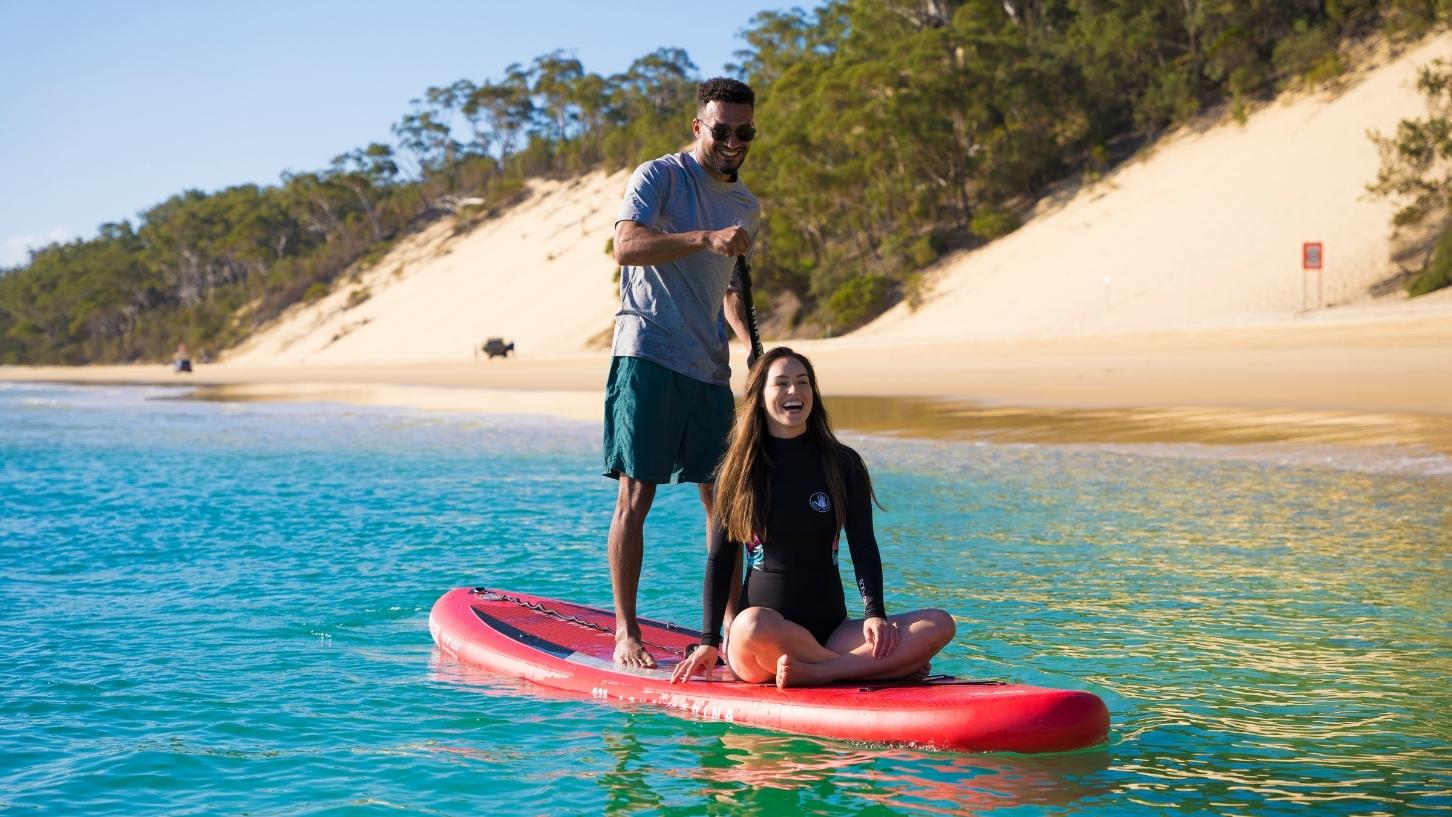
Learning how to stand up paddle board (SUP) takes time and patience. Staying upright and dry is only a small part of what you need to master when you hit the water with your board.
These 10 tips make stand up paddle boarding for beginners easy and fun - and, most of all, safe.
1. Safety first
Before hitting the water - whether it's at the beach, a river or lake - safety must be your number one priority. Stand up paddle boarding can sap your energy pretty quickly while your body adapts to the physical demands of the activity, so make sure you've had something to eat, and that you're well hydrated before getting into the action. You should always have plenty of food and water on hand for replenishing your energy after a paddle session as well.
No matter how active your lifestyle, it's important you do a series of warm-up stretches before hitting the water. Make sure you give your entire body a good stretch but pay particular attention to your lower back and your core abdominal muscles, because they're the areas of your body that will be carrying the greatest load when you're on the water.
As well as keeping your energy levels up and doing some warm-up stretches, sun protection - such as breathable headwear, SPF 50 sunscreen and a UPF 50+ rashie - is another safety consideration. Wearing a life vest or personal flotation device that meets AS 4758.1 is another important tip for stand up paddle board beginners.
2. Choose the right board
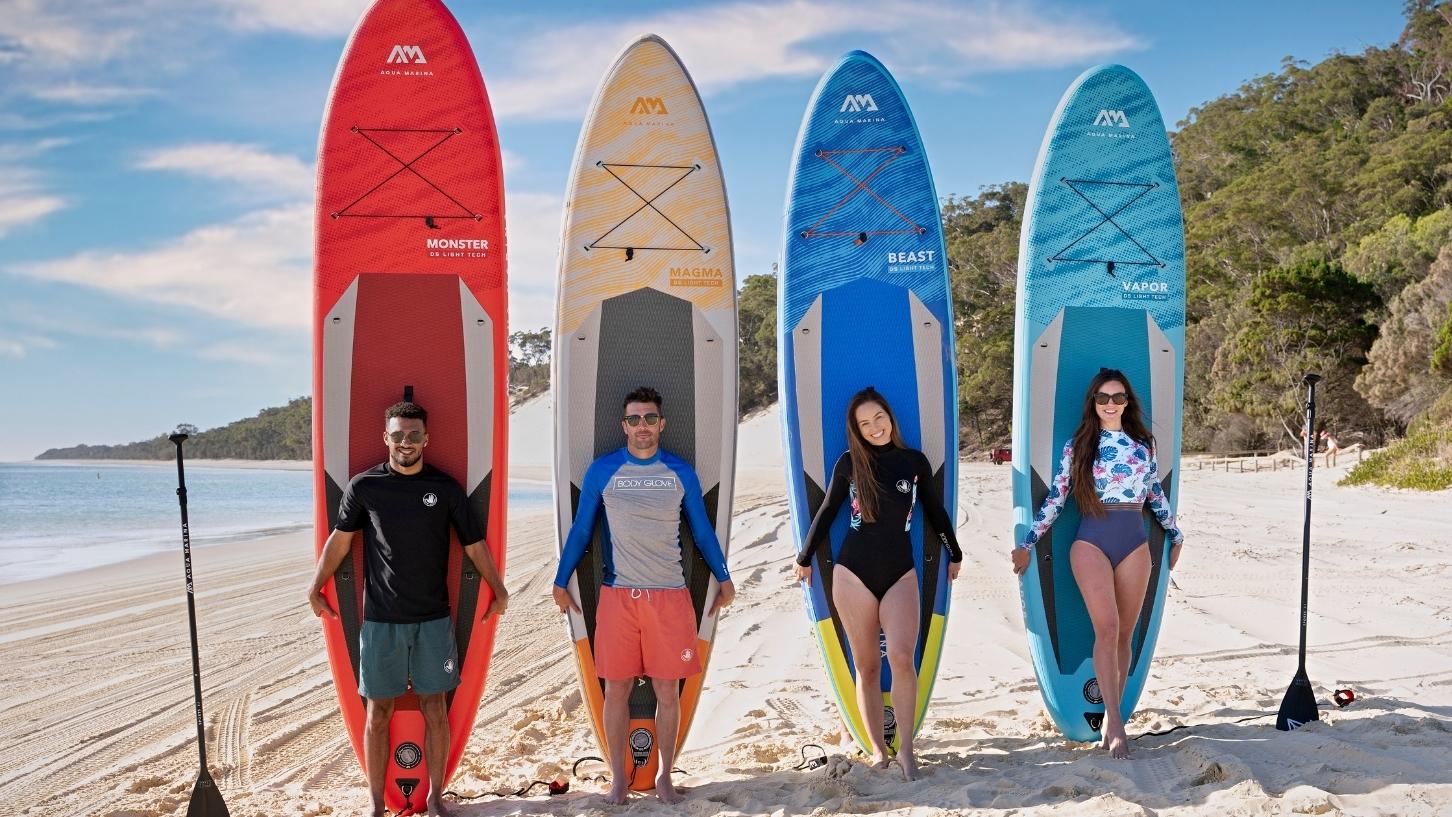
Start with the board that's right for you. By having the right board, it's so much easier to balance and stay upright. It also makes it easier to control and navigate in the water.
If you have a board that's too fast, too light or not strong enough for the types of paddle boarding you want to do, you not only increase the chance of hurting yourself but you could also find yourself getting in the way of more experienced riders and causing an avoidable collision.
3. Use a leg rope
Tethering yourself to your board with a leg rope is an important safety tip, no matter how experienced you are at stand up paddle boarding. When you're learning the art of paddling, you're going to cop the inevitable wipeout or two, and a leg rope prevents you from being separated from your board, especially in windy or rough conditions.
It's important you choose a quality leg rope that's strong enough not to break from your SUP when the going gets tough, and detaches from your leg or ankle with ease when required.
Paddle leashes can also be a smart investment for beginners; however, be careful not to get yourself too tangled up with leads when learning the ropes (pardon the pun).
4. Learn how to fall
Believe it or not, there's a right way to fall off your SUP! And, let's face it, as a beginner, you're going to do some falling before you get the hang of it. In fact, falling off your board is a constant part of paddle boarding, no matter how experienced you are!
Whether you're riding waves and currents, or something a little bit more manageable like a river or lake, knowing how to fall off the right way is about minimising your chance of injury.
Always fall to the side and away from your SUP. Your leg rope will make sure you don't lose your board. Falling over the front of your board is dangerous. It's likely to finish with you getting hit in the head or face by what is a pretty big and heavy board, leaving you with some nasty cuts and scratches - or worse, a broken nose, cheekbone or concussion.
5. Know the wind direction and the weather
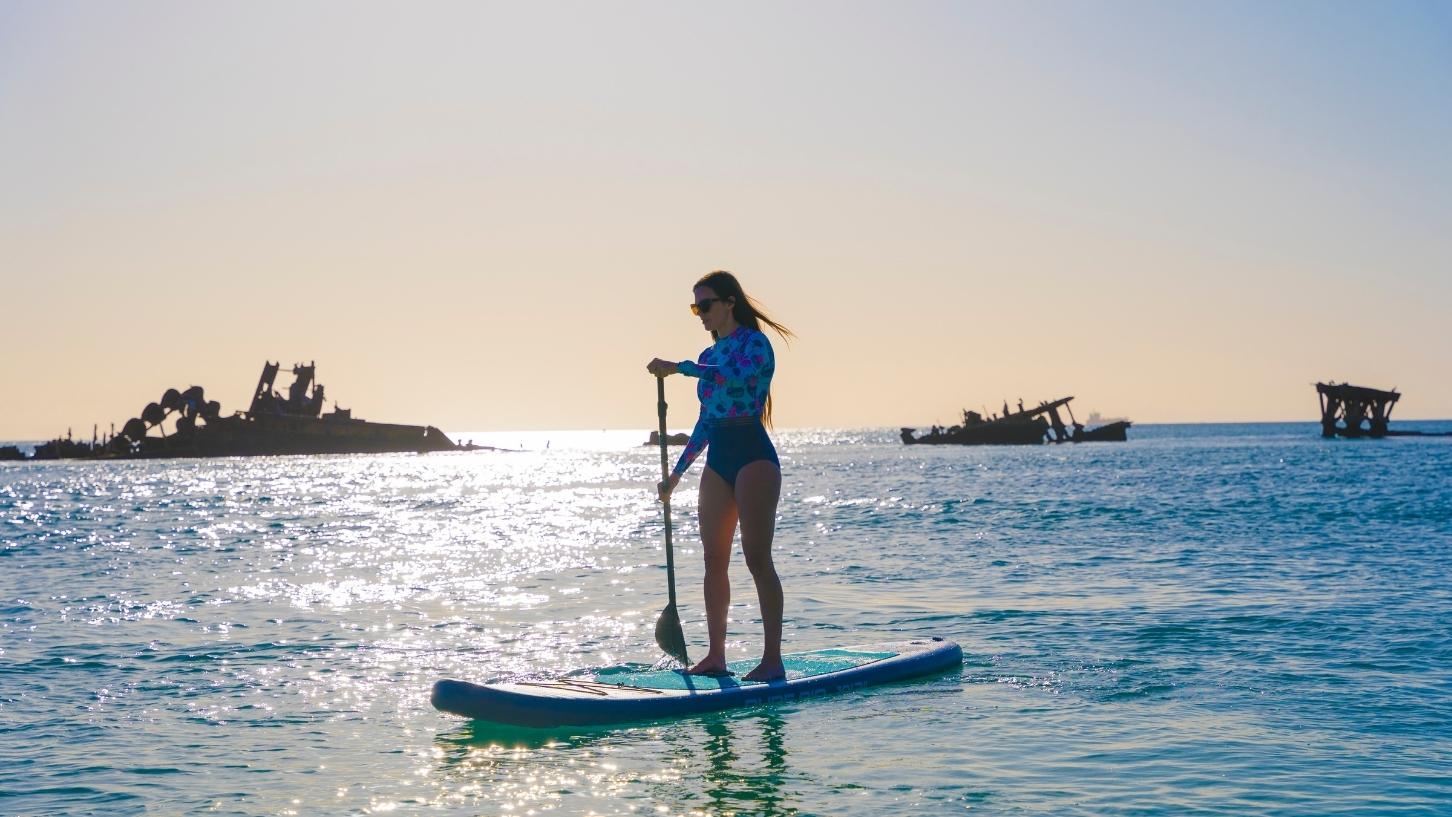
Hitting the water without knowing that day's weather forecast, or checking which direction the wind is coming from, is a recipe for disaster.
When you're standing on a paddle board, your body acts like a sail, so you tend to get dragged in the direction where the wind is blowing. If strong winds are predicted, which are likely to be blowing you away from the shoreline, pull the pin and wait for a day with forecast wind conditions that are more in line with your stand up paddle boarding experience and fitness levels.
If you are caught in bad weather, paddling prone is the best way to get out of trouble: lay down on your board with your paddle tucked under you and paddle in like you would on a surfboard.
6. Face the right way
Because of how they're shaped, it can sometimes be hard to tell the nose from the tail for SUPs designed for beginners. The easiest way to work out the front is to look for the end with the fin. Fins help keep the board straight while you paddle, and help with grip when you're riding waves or choppy seas, so if you're trying to ride a SUP with the fins up front, you'll end up with a twitchy paddle board that won't go straight, no matter how hard you try.
7. Know how to use your paddle
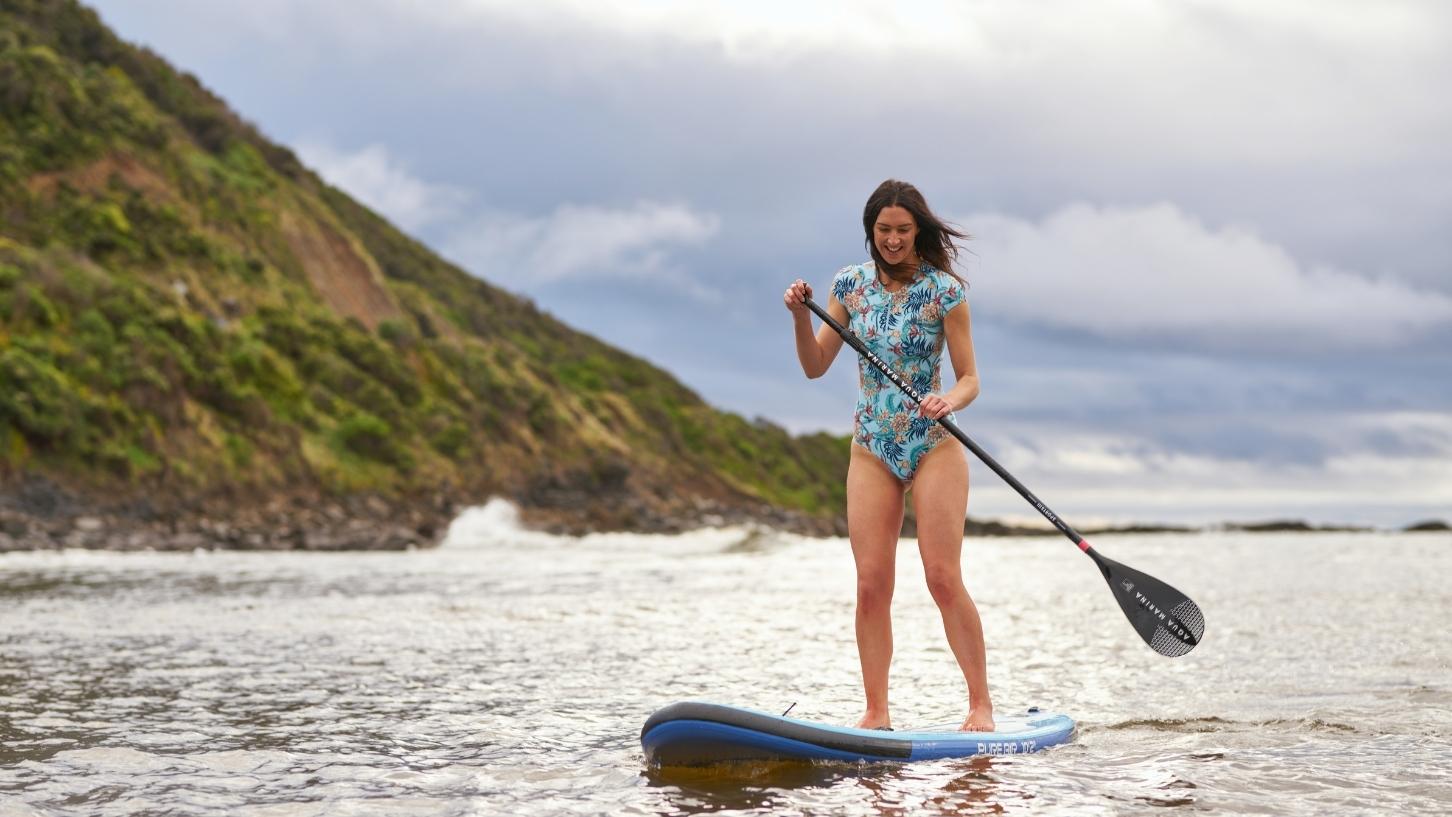
You would be surprised how many stand up paddle board beginners hold a paddle the incorrect way. Most newbies tend to hold their paddle with the bent part of the blade facing towards the rear of their board, when in fact the right way to hold a paddle is with the bend facing forward.
Having the bend facing to the rear of the board causes more splash than necessary because you're scooping water. This makes you work harder and places stress on your shoulders and elbows, hampering your ability to balance properly on your board.
It's essential to get your hand placement on your paddle correct too. Getting the grip right is important for stroke efficiency and not tiring yourself out too soon.
8. Engage your core
This goes hand-in-glove with technique. Using your core muscles will put more power into your paddle stroke than by relying on just your arms and shoulders to do the work. As well as provide power, it will help you to stay balanced on the board.
9. Keep your head up
Staying balanced is vital when learning how to stand up paddle board. A simple trick for getting used to the feel of your board and staying upright is to keep your head up and your eyes looking forward towards the horizon.
If you're busy watching your feet, it's going to mess with your balance and increase the likelihood of you falling off your board. Instead, keep your back straight, head up and put your body weight over your toes.
10. Give yourself enough space
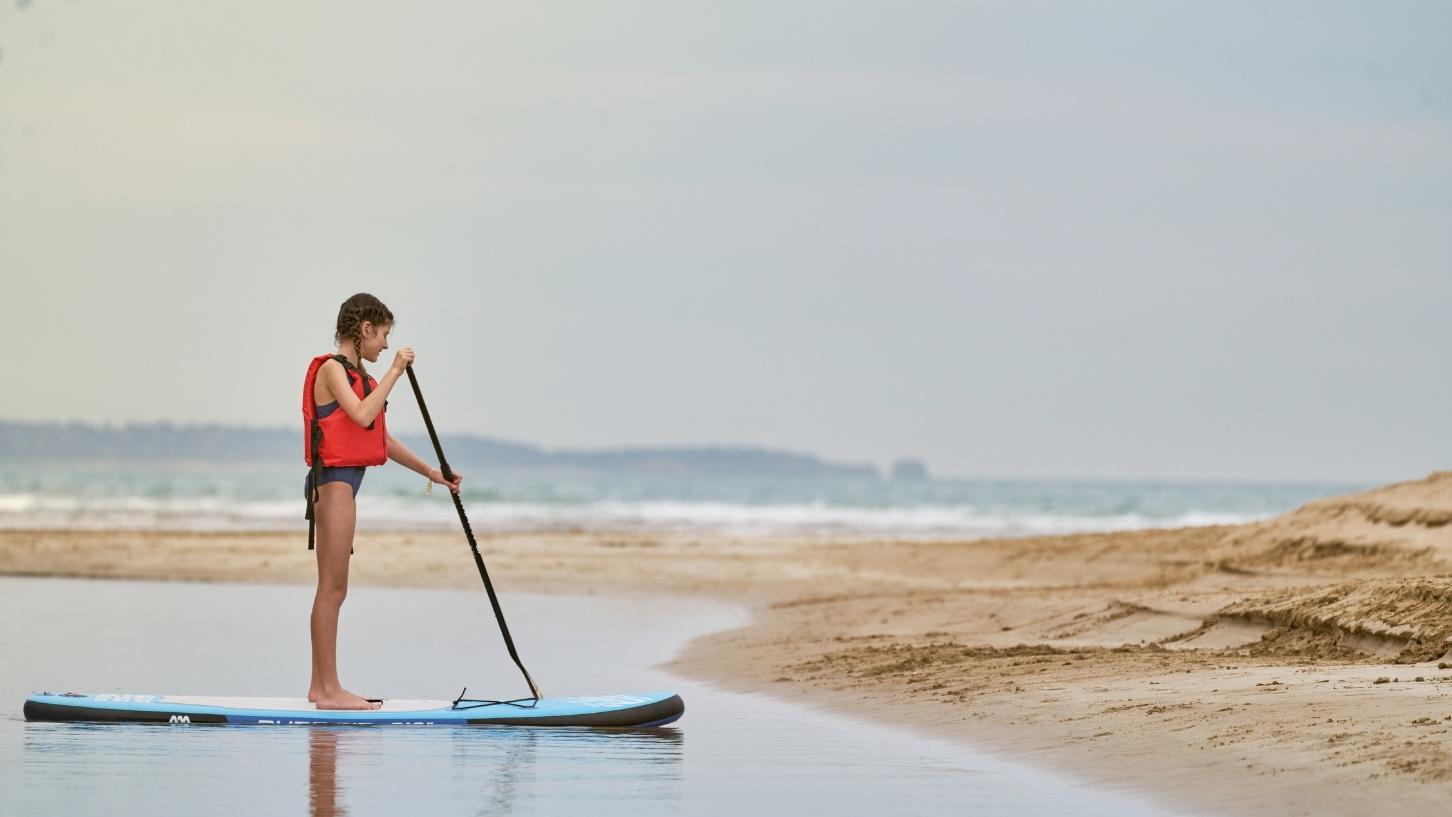
There's a great camaraderie that exists in the SUP community. Everyone remembers what it was like the first time they tried to ride a board, so the chances are you'll find other SUP boarders super supportive and helpful while you're learning.
Nevertheless, you should be mindful of other water users when you're a beginner. Make sure you have plenty of room to practice standing, falling and paddling without disturbing other riders and minimising the chance of you getting hit by another board if you end up falling off your SUP.
In conclusion
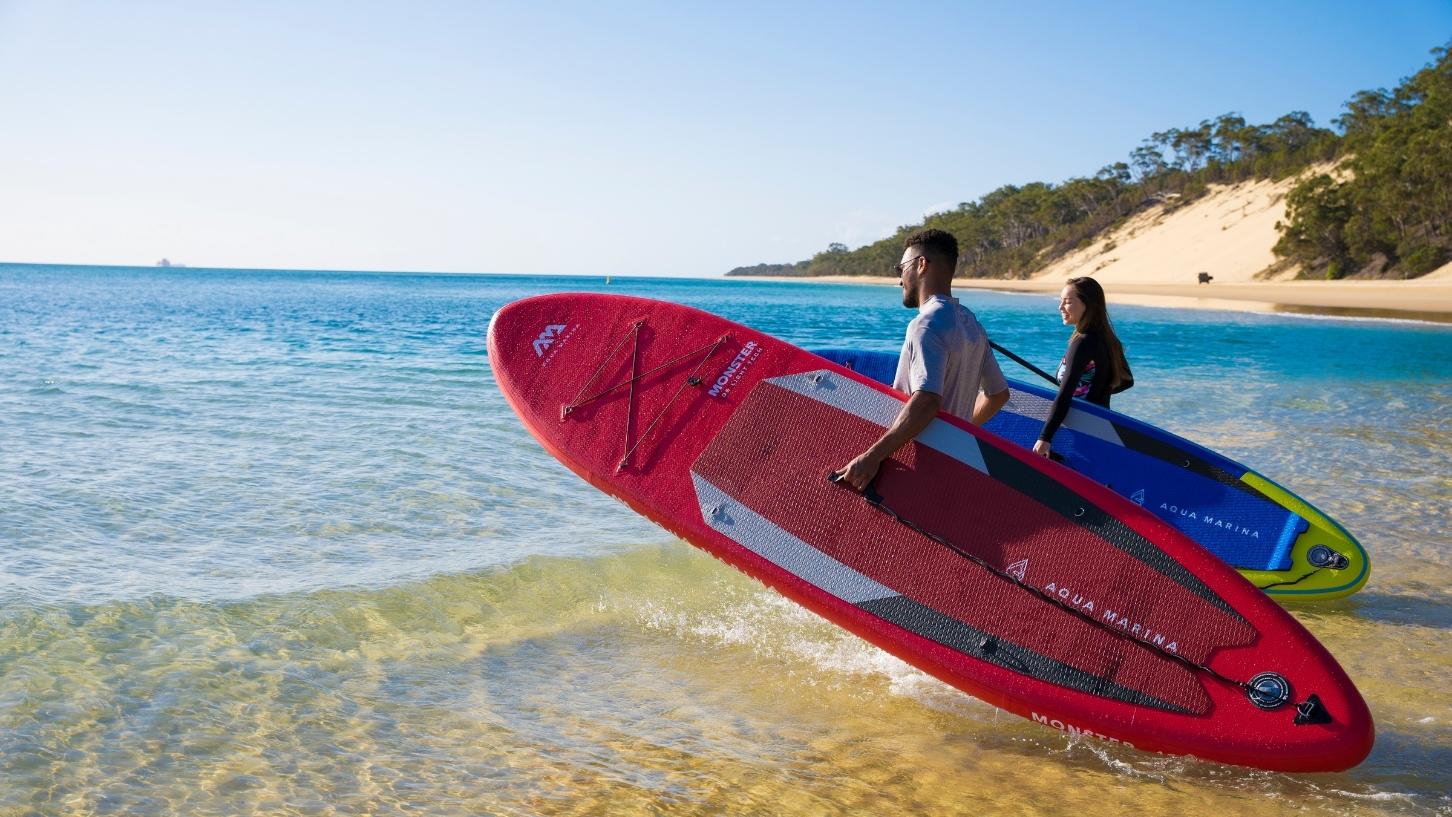
There are no shortcuts when it comes to learning how to stand up paddle board but that doesn't mean it can't be fun. Following these 10 stand up paddle boarding tips for beginners will make doing the hard yards that much easier and help you get the maximum fun from SUP in no time.